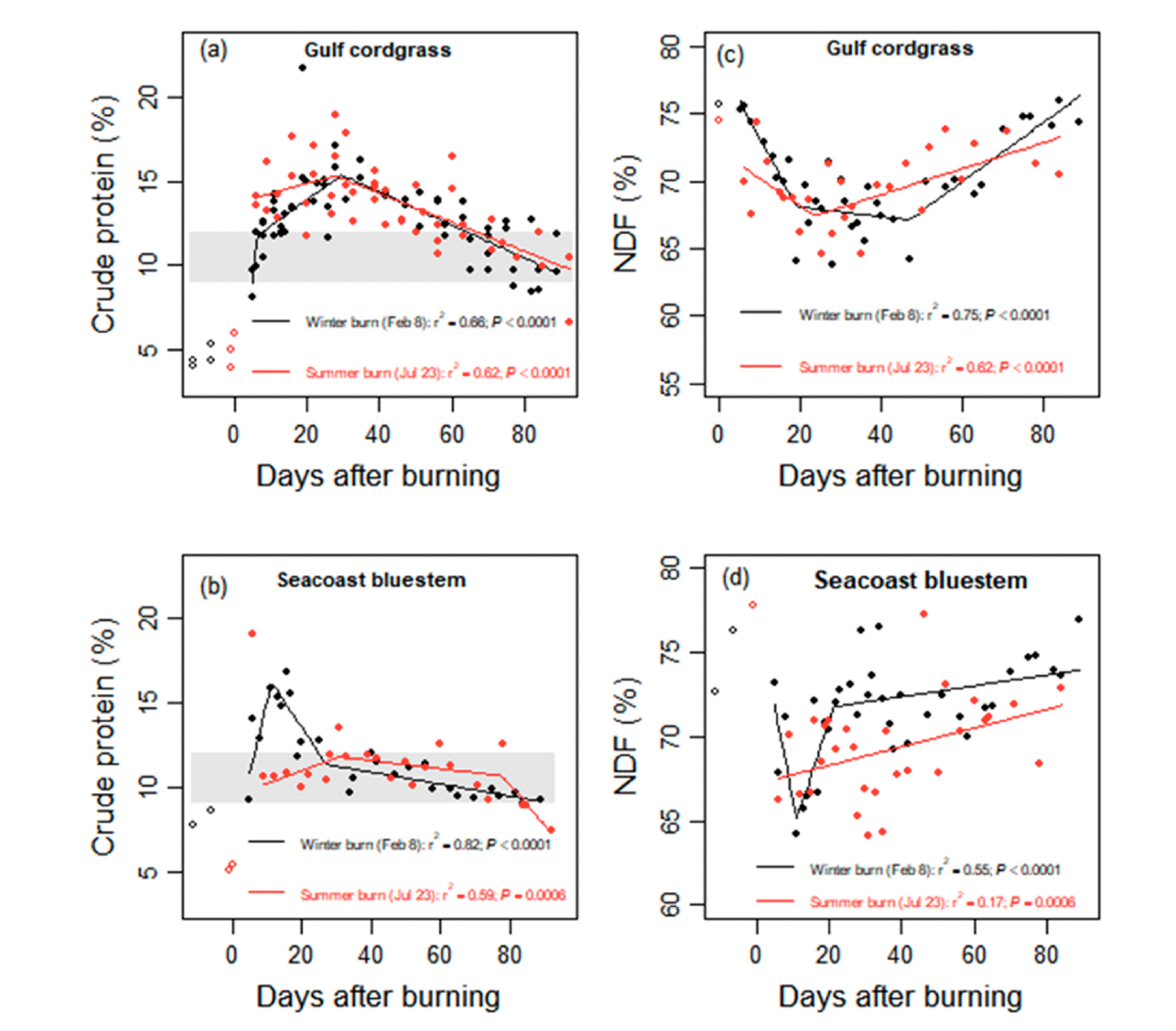 Gulf cordgrass and seacoast bluestem are native warm season grasses that are found in the Texas Coastal Prairies and Marshes ecoregions. Mature Gulf cordgrass has a nutritional value that is considered poor for grazing animals while the seacoast bluestems nutritional value is considered fair to good in spring and early summer.
Gulf cordgrass and seacoast bluestem are native warm season grasses that are found in the Texas Coastal Prairies and Marshes ecoregions. Mature Gulf cordgrass has a nutritional value that is considered poor for grazing animals while the seacoast bluestems nutritional value is considered fair to good in spring and early summer.
Haynes, V.L.; Avila-Sanchez, J.S.; Toomey, A.E.; Ortega-S., J.A.; Campbell, T.A.; Ortega-S., A., Jr.; Rideout-Hanzak, S.; Wester, D.B. Patch Burning Improves Nutritional Quality of Two Gulf Coast Grasses—And Winter Burning Is Better than Summer Burning. Fire 2023, 6, 105. https://doi.org/ 10.3390/fire6030105
In the following study, the season of burn effects on crude protein and neutral detergent fiber of these grasses was compared. The study included four patches that were burned in a patch-burn grazing system, two in the winter and two in the summer. Forage samples were collected prior to each burn and every three days for 40 days after burning and then weekly for 50 days.
The results showed adequate amounts of crude protein for maintaining a lactating beef cow 90 days after post-burning. Peak crude protein in Gulf cordgrass did not differ between the seasons after a burn, however crude protein increased quicker following a winter burning.
Crude Protein in seacoast bluestem increased following the winter burning, peaking at 11 days after burning, however there was little change following the summer burns.
According to this study, prescribed fire in the winter is more beneficial for improving the nutritive value of Gulf cordgrass and seacoast bluestem than burning in the summer.
For more information and the full study, check it out here.